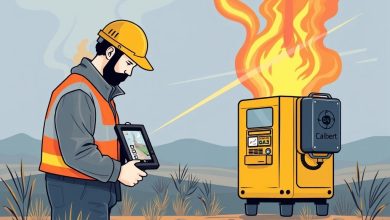Field Service Management with Realtime Service Territory Mapping

Introduction
Field Service Management (FSM) is a critical component of many businesses, particularly in industries such as HVAC, electrical work, plumbing, and home maintenance. As companies continue to grow and expand their service areas, managing field technicians efficiently becomes increasingly challenging. This is where Realtime Service Territory Mapping comes into play – a powerful tool that optimizes route planning, improves customer satisfaction, and enhances overall operational efficiency.
The Evolution of Field Service Management
Field Service Management has come a long way since its inception. From manual paper-based systems to modern digital solutions, the industry has witnessed significant advancements in technology and software development. Today, FSM encompasses various aspects of service delivery, including scheduling, dispatching, inventory management, and customer relationship building.
Key Components of Modern FSM Systems
- Scheduling and Dispatching
- Automated scheduling algorithms
- Real-time job assignment
- Multi-resource scheduling capabilities
2. Mobile Workforce Management
- GPS tracking
- Job status updates
- Electronic proof of service
3. Inventory Management
- Stock levels monitoring
- Automatic reordering
- Parts availability tracking
4. Customer Relationship Management (CRM)
- Service history
- Appointment reminders
- Customer feedback mechanisms
The Role of Realtime Service Territory Mapping
Realtime Service Territory Mapping is a game-changer in the field service industry. It combines geographic information system (GIS) technology with real-time data to provide visual representations of service territories and optimize resource allocation.
Benefits of Realtime Service Territory Mapping
- Improved Route Efficiency
- Dynamic routing based on current traffic conditions
- Avoidance of congested areas
- Minimization of travel time between jobs
2. Enhanced Resource Allocation
- Identification of optimal service areas for each technician
- Balancing workload across different regions
- Efficient use of company resources
3. Better Customer Experience
- Accurate estimated arrival times
- Transparent communication throughout the service process
- Improved first-time fix rates due to optimized routes
4. Data-Driven Decision Making
- Analysis of historical service patterns
- Identification of high-demand areas
- Strategic planning for business expansion
Implementing Realtime Service Territory Mapping
Implementing a Realtime Service Territory Mapping solution requires careful consideration of several factors:
- Choosing the Right Software
- Compatibility with existing FSM systems
- Ease of use for field technicians
- Scalability to accommodate future growth
2. Data Integration
- Importing existing customer and job data
- Integrating with mapping APIs for real-time traffic updates
- Ensuring data security and privacy compliance
3. Training and Adoption
- Comprehensive training programs for all staff members
- Addressing potential resistance to change from experienced technicians
- Providing ongoing support and troubleshooting assistance
4. Performance Monitoring and Continuous Improvement
- Setting key performance indicators (KPIs)
- Regular review of system effectiveness
- Gathering feedback from both customers and field technicians
Case Study: XYZ Plumbing Services
XYZ Plumbing Services, a medium-sized company operating in a metropolitan area, implemented a Realtime Service Territory Mapping solution to improve their operations. Here’s how it impacted their business:
Pre-Implementation Challenges
- Inefficient route planning leading to excessive travel time
- Uneven distribution of jobs among technicians
- Difficulty in identifying high-demand areas for strategic expansion
Post-Implementation Results
- Reduced Travel Time
- Average job-to-job travel time decreased by 25%
- Technicians completed more jobs per day, increasing productivity by 15%
2. Improved Resource Allocation
- Optimal territory assignments reduced idle time by 30%
- Technicians reported better work-life balance due to more efficient schedules
3. Enhanced Customer Satisfaction
- First-time fix rate improved from 70% to 85%
- Customers received accurate estimated arrival times, reducing complaints about late arrivals
4. Data-Driven Decision Making
- Identified high-demand neighborhoods for targeted marketing efforts
- Planned for strategic expansion into newly identified high-potential areas
Conclusion
Field Service Management with Realtime Service Territory Mapping represents a significant leap forward in optimizing service delivery processes. By leveraging cutting-edge technology, businesses can streamline their operations, improve customer satisfaction, and ultimately drive revenue growth.
As the field service industry continues to evolve, embracing innovative technologies like Realtime Service Territory Mapping will be crucial for companies seeking to maintain competitiveness and stay ahead of the curve. Whether you’re a seasoned field service manager or just starting out, investing in a robust FSM system with integrated realtime mapping capabilities can significantly enhance your ability to manage your workforce effectively and deliver exceptional service to your customers.



